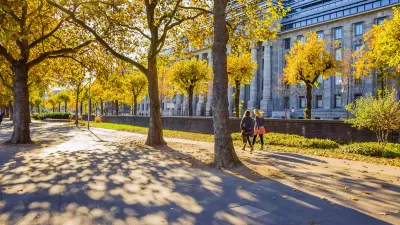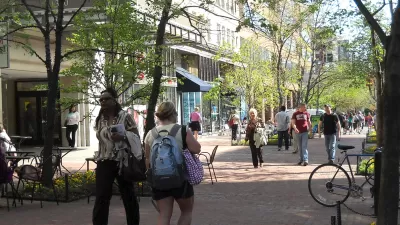Integrated food systems planning is a cornerstone of efforts to create healthy and sustainable communities across America. Kimberley Hodgson summarizes recent research conducted by the APA that evaluates which communities are leading the way.
Access to food is a basic human right, and a critical aspect of building a sustainable healthy community. However a recent APA study has revealed that "only 105 jurisdictions in the U.S. explicitly address an aspect of local or regional food systems in their comprehensive plans or sustainability plans,"
In an effort to spotlight those communities that have taken, "important steps to connect local food system–related issues to economic, social, and ecological goals," recent APA research has focused on identifying which communities are leading the way in food systems planning and the ways in which their work can inform the many cities who will follow their trailblazing path.
According to research conducted by APA's Planning and Community Health Research Center, "The top five highest-scoring plans included Marin County, California's comprehensive plan; Philadelphia's sustainability plan; San Francisco's sustainability plan; Sacramento's comprehensive plan; and Baltimore's sustainability plan."
"All of these plans included explicit goals and policies to improve food access equity within the context of the larger community food system, but also addressed how to implement each food-related policy outlined in the plan and how to monitor and track progress in achieving the plan's food goals."
In her summary of the research, Hodgson shares the 10 main steps a local government can take to effectively plan for healthier, more sustainable local and regional food systems.
This summer, APA will publish a policy report to share the complete results of the study.
FULL STORY: Food Access: The Missing Sustainability Planning Topic?

Planetizen Federal Action Tracker
A weekly monitor of how Trump’s orders and actions are impacting planners and planning in America.

Maui's Vacation Rental Debate Turns Ugly
Verbal attacks, misinformation campaigns and fistfights plague a high-stakes debate to convert thousands of vacation rentals into long-term housing.

San Francisco Suspends Traffic Calming Amidst Record Deaths
Citing “a challenging fiscal landscape,” the city will cease the program on the heels of 42 traffic deaths, including 24 pedestrians.

Amtrak Rolls Out New Orleans to Alabama “Mardi Gras” Train
The new service will operate morning and evening departures between Mobile and New Orleans.

The Subversive Car-Free Guide to Trump's Great American Road Trip
Car-free ways to access Chicagoland’s best tourist attractions.

San Antonio and Austin are Fusing Into one Massive Megaregion
The region spanning the two central Texas cities is growing fast, posing challenges for local infrastructure and water supplies.
Urban Design for Planners 1: Software Tools
This six-course series explores essential urban design concepts using open source software and equips planners with the tools they need to participate fully in the urban design process.
Planning for Universal Design
Learn the tools for implementing Universal Design in planning regulations.
Heyer Gruel & Associates PA
JM Goldson LLC
Custer County Colorado
City of Camden Redevelopment Agency
City of Astoria
Transportation Research & Education Center (TREC) at Portland State University
Jefferson Parish Government
Camden Redevelopment Agency
City of Claremont





























